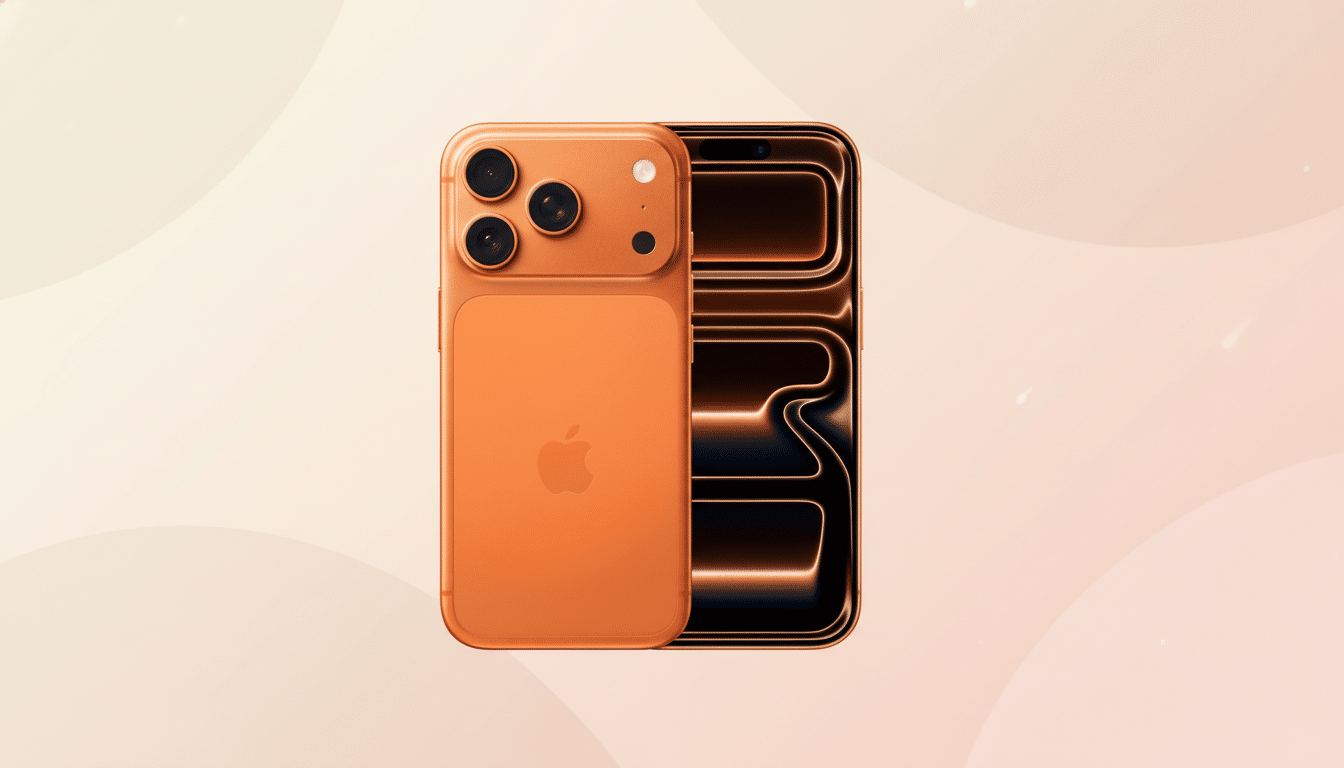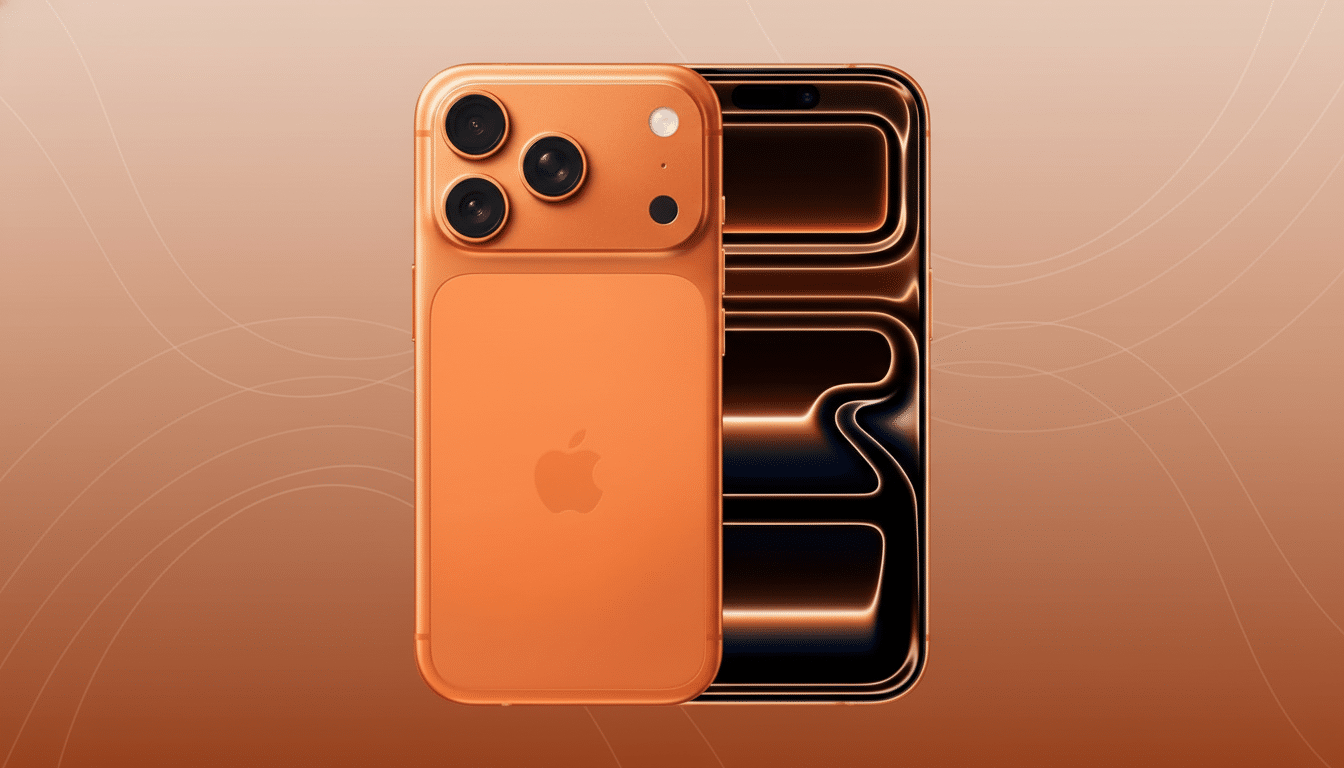Some Cosmic Orange iPhone 17 Pro owners have noticed that the tangerine-colored frame on their phone has begun to take on a pinker tint. In photos posted in user communities, the rear glass of the phone remains vividly orange while the metal band around it takes on a pinkish — perhaps rose-goldish — tint. It’s scary-looking, but the reason is far more materials science than mystery — and it boils down mostly to how anodized aluminum interacts with everyday cleaners as well as light and wear.
None of this is some new smartphone “gate,” and it’s unlikely to be that widespread. But if your orange is going pink in silence there’s a good chance some habits we all take for granted are speeding up the process.

What’s Really Changing on the Phone’s Aluminum Frame
Apple’s Cosmic Orange finish is based on a dyed anodized coating of the phone’s aluminum frame. The rear glass and ceramic are tinted differently, and they are constant as a result; that’s why they stay bright orange, even as the metal band shifts tone. For the frame, it may be around 10–25 micrometers thick for normal use, with tiny pores in the surface to accept dyes or chemicals before sealing.
After anodizing, when color has gone into those pores and the layer is sealed (often with nickel acetate), durability is great. But it remains an organic dye, and some chemicals or conditions may change the color over time.
The Science Behind the iPhone’s Anodized Pink Shift
Hydrogen peroxide is the culprit in question. It’s a potent oxidizer that is used in many surface disinfectants and some hand-sanitizer formulas. Oxidizers do not strip anodized coatings; they bleach the dye that is inside it. Multicomponent orange dyes tend to lose their yellow component faster, leaving the red component more prominent — and our eyes read that as pink, as color chemists will explain.
Apple’s cleaning advice cautions against products including bleach, hydrogen peroxide, abrasive powder, or aerosol sprays. Rather, it authorizes 70% isopropyl alcohol wipes, 75% ethyl alcohol wipes, or trusted disinfecting wipes not based on peroxide. One squirt of the wrong cleaner won’t necessarily end in instant disaster, but several applications can push the hue to magenta.
Exposure to ultraviolet light and heat is also important. The Aluminum Anodizers Council states that organic dyes can be vulnerable to UV, and accelerated test methods (e.g., ASTM xenon arc protocols) are available for the purpose of comparing fade resistance. Direct sun on a hot dashboard for several hours won’t melt the metal, but it can accelerate dye shift, especially if the quality of the seal varies. Sweat, too: Human perspiration is salty and acidic, with typical skin-surface pH ranging from about 4.5 to 7. The combination of frequent, unwiped sweat and friction can promote micro-abrasion and dye transfer near high-touch points (edges and buttons).

Lastly, case and fabric transfer occurs. Colorants in bright silicone or fabric cases can leach; indigo dye from dark denim may rub off. That transfer can also interact with the finish, or owners try to clean them, and the process makes things worse; owners then reach for harsher chemicals that encourage just the bleaching that turns orange to pink.
What to Do if It’s a Manufacturing Defect
Anodizing has more than one step — surface prep, anodic growth, dye, and seal. If the sealing process is not properly controlled or uniform, dyes are more susceptible to chemical and UV penetration. Apple-focused websites and community forums have pointed out isolated instances where frames exhibit this type of uneven tone shifting while glass remains static. If your phone turned the wrong color on one side in a matter of weeks, without exposure to harsh cleaners as you described, then some sort of quality-control issue with Apple is probably at work.
Reality is, unless a clear materials defect is proven, the manufacturers consider color changes to be cosmetic. Apple’s one-year limited warranty only covers process failure, not cosmetic wear, but a hands-on inspection at an authorized service provider can determine whether your equipment exhibits indications of process issues versus environmental exposure. Photos, your cleaning habits, and case use help that assessment along.
How to Keep Your Cosmic Orange iPhone From Fading
- Choose the right wipe. Follow Apple’s care guidance and use 70% isopropyl or 75% ethyl alcohol wipes, and stay away from anything listing hydrogen peroxide or bleach. After you’ve wiped down counters or gym equipment with household cleaners, wash your hands before grabbing the phone so residue doesn’t transfer.
- Limit harsh environments. I wouldn’t bake the phone on a sun-drenched car dashboard, for example, and wash the frame with fresh water after exposure to saltwater or heavy sweat before gently drying it off with a clean microfiber cloth. Bypass the abrasive pads and “magic eraser” sponges; they can actually micro-burnish the finish and expose dye to accelerated fading.
- Watch your accessories. Light, non-lined cases minimize dye transfer. If a phone case leaves colored residue on a white cloth after being wiped, it can do the same to your phone gradually.
If Yours Is Already Starting to Turn Pink
It’s not like you can “polish” the color back to orange. Re-anodizing would mean stripping the frame and then reprocessing — basically a full refurbish, and not just any consumer service request. Your practical choices here are to live with the patina, put a case or skin on it, or approach some kind of service evaluation. If Apple finds the change resulted from an anomaly in a process it may offer a solution; if it’s deemed to be environmental, the firm will probably consider that there is nothing more than cosmetic wear.
The bottom line: Cosmic Orange is dependent on a colored anodizing that looks awesome but acts like chemistry says it will. “Keep peroxide and bleach away, minimize UV and heat exposure — and you will dramatically reduce the odds that your statement color creeps more into pink territory,” he said.

